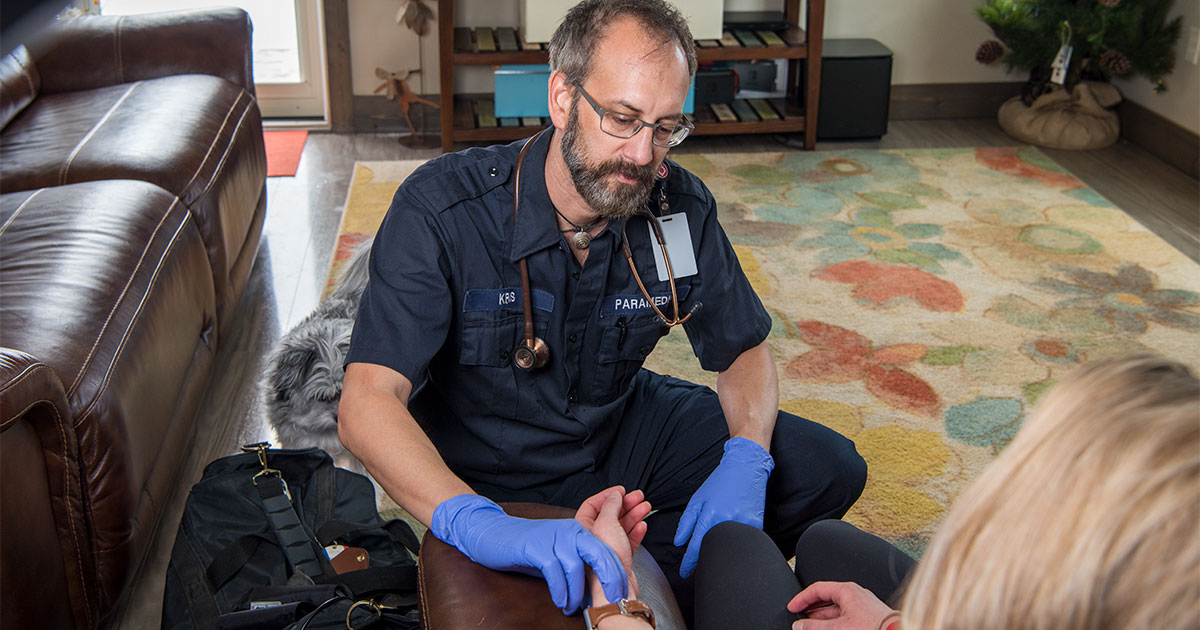Pulsara Around the World - 2025 Recap and January 2026
December Recap After an incredibly busy events year with 102 conferences, trade shows, and sponsorships, December was on the slower side for us, with...
2 min read
 Team Pulsara
:
Apr 17, 2024
Team Pulsara
:
Apr 17, 2024

EDITOR'S NOTE: The following is an excerpt from an article by Larry Beresford, originally published on EMS World on April 3rd, 2024. Check out the full article here.
Telemedicine for the EMS personnel of MedStar Mobile Healthcare, a governmental EMS system in Fort Worth, Texas, is linked through an app on their Android hand-held phones, says Matt Zavadsky, MS-HSA, NREMT, MedStar’s chief transformation officer.
“The crew does everything with their Android phone. They get their calls and their post moves, they get routed by the live routing system, they text with dispatch, they text with each other,” Zavadsky explains. “When they get to the scene of a call, they pop the phone out of its drop-in cradle charger at the front of the truck and bring it with them.”
Telemedicine, which can connect them virtually with physicians from integrative emergency services and the physician with the patient, has been a positive experience for MedStar’s field staff, Zavadsky says. “Every EMT or paramedic who works out in the field knows that a fair percentage, some might say the majority, of our patients, don’t actually need to go to the emergency room.” Is it safe for this patient to go to urgent care? Can they get a prescription written for a new medicine or refill an existing prescription?
A virtual physician visit can answer these questions, and having that telemedicine backup facilitates the paramedics and EMTs to provide more patient-centric care, says Zavadsky, who also takes occasional EMT shifts himself. “We are helping the patient navigate the health care system to the most appropriate setting. One of the tools we use is telemedicine, just like we use a 12-lead EKG monitor.”
ET3 Held Promise for EMS
Utilizing telemedicine to provide medical backup and consultations virtually to ambulance crews in the field was easier under Emergency Triage, Treat, and Transport (ET3), a model of the federal Centers for Medicare and Medicaid Innovation (CMMI), Zavadsky says. Initially billed as a harbinger of EMS’s future, ET3 was shut down by the government at the end of 2023 because of lower-than-expected agency participation in the pilot and lower utilization by participating agencies.
ET3 paid participating EMS services to transport Medicare beneficiaries to appropriate alternative destination partners such as a primary care medical office, urgent care clinic, or community mental health center or to initiate medical treatment virtually at the scene of the call via telemedicine.
Many in the field viewed the government’s decision to shut down ET3 as a step backward for mobile integrated healthcare (MIH), which is a term encompassing a variety of patient-centered mobile resources in the out-of-hospital environment, including community paramedics in expanded roles, transport or referral to a broad spectrum of appropriate alternate care, and post-discharge follow-up. Telemedicine typically is used for somewhat lower acuity cases and excludes obstetric and pregnancy complaints, patients under a year old, and suspected higher acuity illnesses, among other categories.
Despite the setback for ET3, experts believe that the forces driving MIH to address EMS staffing shortages, increased call volumes, the COVID pandemic and fentanyl epidemic, emergency department overcrowding and boarding, and the need for other options for patients will be hard to stop. Some Medicare Advantage plans Medicaid programs, and private payers are getting on board to reimburse agencies for providing frontline response even when the patient doesn’t get transported to an ER.
With a new protocol and Pulsara, Metropolitan EMS in Little Rock, Arkansas, transports pediatric behavioral health patients directly to behavioral health facilities—resulting in a 44% decrease of pediatric behavioral health patients transported to the ED. Download the case study to learn more.

December Recap After an incredibly busy events year with 102 conferences, trade shows, and sponsorships, December was on the slower side for us, with...

Editor's Note: In July 2025, EMS1 and Fitch & Associates released their annual EMS trend survey, What Paramedics Want, proudly sponsored by Pulsara....
![[PRESS RELEASE] Published Research Finds Up to 31% Faster STEMI Treatment Times in Rural Hospital Setting with Pulsara](https://www.pulsara.com/hubfs/_1_website-page-blog-assets/pulsara-hosp-teams-assign-cardio-stemi-rn-1200x701.jpg)
Published research shows how using Pulsara, alongside standardized field activation and a focus on stakeholder relationships, improves STEMI care and...